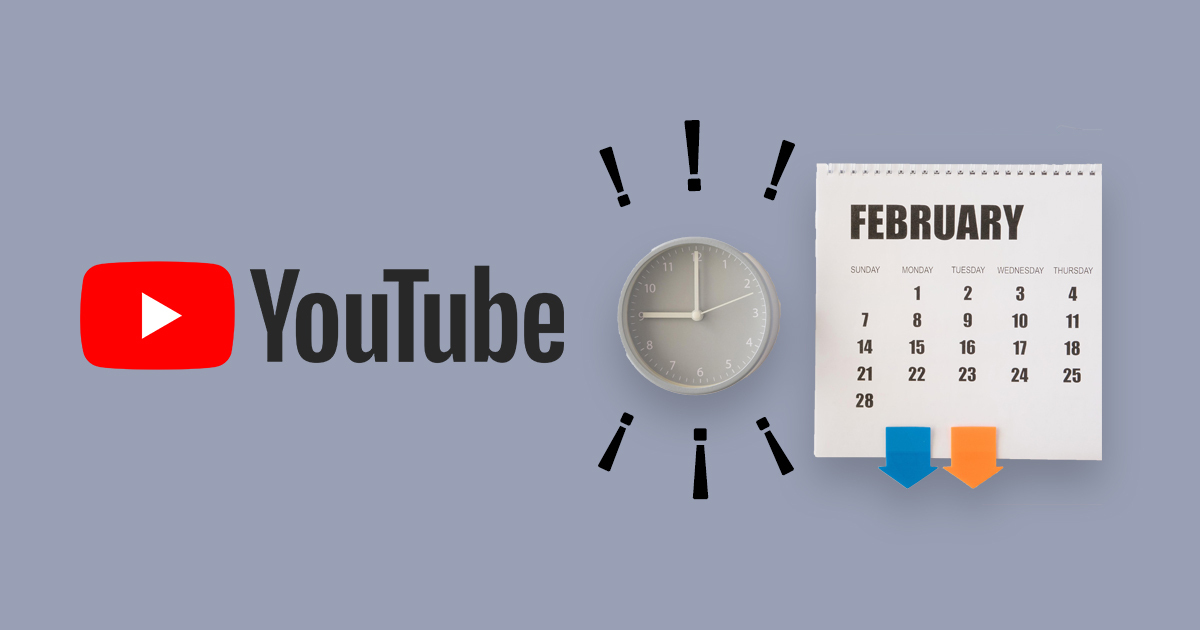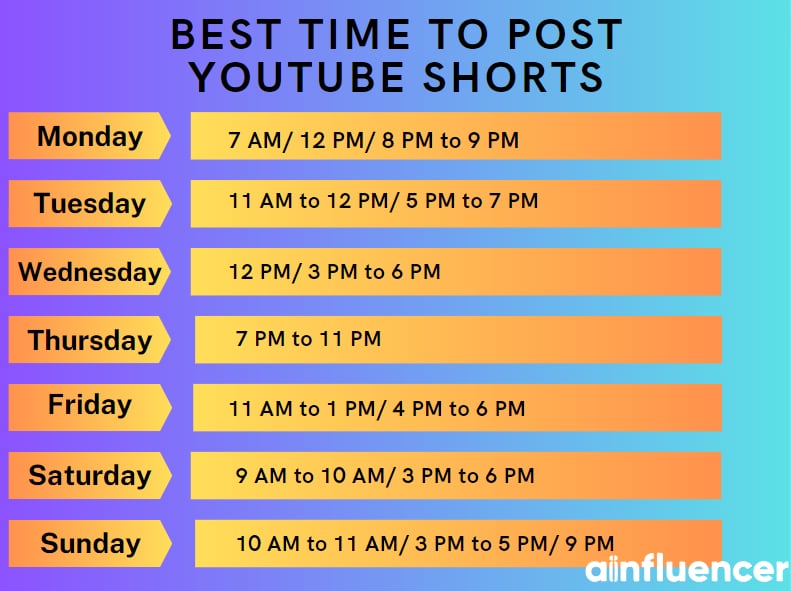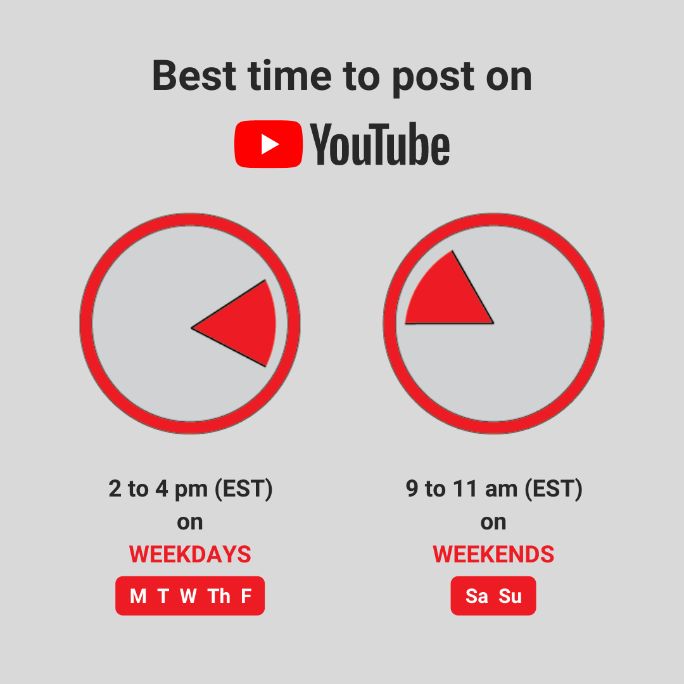Why Posting at the Right Time Matters for YouTube Shorts Success
When it comes to posting YouTube Shorts, timing is crucial for success. The right timing can make a significant difference in a video’s engagement, views, and algorithmic ranking. In fact, research has shown that posting at the right time can increase engagement by up to 30% and views by up to 20%. This is because YouTube’s algorithm takes into account the timing of a video’s upload and how it aligns with the audience’s viewing habits.
For instance, posting a YouTube Short during peak hours, such as 12 pm – 4 pm EST, can increase its visibility and engagement. This is because most viewers are on their lunch break or taking a short break during this time, making it an ideal time to post content. On the other hand, posting during off-peak hours, such as 2 am – 5 am EST, may result in lower engagement and views.
Moreover, the best time to post YouTube Shorts in 2023 may vary depending on the target audience and their viewing habits. For example, if the target audience is primarily composed of students, posting during school hours (8 am – 3 pm EST) may not be effective. However, posting during after-school hours (3 pm – 6 pm EST) may result in higher engagement and views.
Understanding the importance of timing in YouTube Shorts success is crucial for creators who want to increase their online presence and reach a wider audience. By posting at the right time, creators can increase their engagement, views, and algorithmic ranking, ultimately leading to more success on the platform.
In the next section, we will delve into the inner workings of YouTube’s algorithm and how it takes into account audience behavior, including watch time, engagement, and drop-off points.
https://www.youtube.com/watch?v=0K4Y4z_LF_E
Understanding YouTube’s Algorithm and Audience Behavior
YouTube’s algorithm is a complex system that takes into account a multitude of factors to determine the visibility and engagement of a video. One of the key factors is audience behavior, including watch time, engagement, and drop-off points. By understanding how the algorithm works and how it takes into account audience behavior, creators can optimize their posting schedule to maximize engagement and views.
Watch time is a critical metric that measures how long viewers watch a video. The algorithm favors videos that keep viewers engaged for longer periods, as it indicates that the content is high-quality and relevant. Engagement, on the other hand, refers to the interactions viewers have with a video, such as likes, comments, and shares. The algorithm takes into account the number of engagements a video receives, as well as the timing of those engagements.
Drop-off points refer to the moments when viewers stop watching a video. The algorithm analyzes these points to determine whether a video is holding viewers’ attention or not. By understanding where viewers are dropping off, creators can adjust their content to keep viewers engaged for longer.
YouTube’s algorithm also takes into account the timing of a video’s upload. Posting at the right time can increase a video’s visibility and engagement, as it aligns with the audience’s viewing habits. For example, posting a video during peak hours (e.g., 12 pm – 4 pm EST) can increase its visibility and engagement, as more viewers are active during this time.
By understanding how YouTube’s algorithm works and how it takes into account audience behavior, creators can optimize their posting schedule to maximize engagement and views. This includes posting at the right time, creating high-quality and engaging content, and encouraging viewers to interact with the video.
In the next section, we will discuss how to identify the peak hours of your target audience, including using YouTube Analytics, social media insights, and online tools.
Identifying Your Target Audience’s Peak Hours
To optimize your posting schedule for YouTube Shorts, it’s essential to identify the peak hours of your target audience. This can be done by using various tools and analytics platforms. One of the most effective ways to identify peak hours is by using YouTube Analytics.
YouTube Analytics provides a wealth of information about your audience, including their viewing habits, engagement patterns, and demographics. By analyzing this data, you can identify the times of day and days of the week when your audience is most active and engaged.
Another way to identify peak hours is by using social media insights. Social media platforms like Twitter, Instagram, and Facebook provide analytics tools that can help you understand your audience’s behavior and preferences. By analyzing these insights, you can identify the times of day and days of the week when your audience is most active and engaged on social media.
Online tools like Google Trends and Keyword Planner can also help you identify peak hours. These tools provide information about search volume, trends, and audience behavior, which can help you identify the times of day and days of the week when your audience is most active and engaged.
By using these tools and analytics platforms, you can identify the peak hours of your target audience and optimize your posting schedule accordingly. For example, if your analytics show that your audience is most active on YouTube between 12 pm and 4 pm EST, you can schedule your YouTube Shorts to post during this time to maximize engagement and views.
It’s also important to note that peak hours can vary depending on the day of the week and the time of year. For example, if your audience is primarily composed of students, they may be more active on YouTube during the week and less active on weekends. By taking these factors into account, you can optimize your posting schedule to maximize engagement and views.
In the next section, we will discuss the best times to post YouTube Shorts for maximum engagement, including specific time slots and days of the week.
The Best Times to Post YouTube Shorts for Maximum Engagement
When it comes to posting YouTube Shorts, timing is crucial for maximum engagement. Research has shown that posting at the right time can increase engagement by up to 30% and views by up to 20%. But what are the best times to post YouTube Shorts?
According to a study by TubeFilter, the best times to post YouTube Shorts are:
- 12 pm – 4 pm EST (Monday – Friday): This time slot is ideal for reaching a large audience, as it coincides with lunch breaks and after-school hours.
- 7 pm – 10 pm EST (Monday – Thursday): This time slot is great for reaching a younger audience, as it coincides with prime-time TV hours and evening commutes.
- 10 am – 12 pm EST (Saturday – Sunday): This time slot is ideal for reaching a weekend audience, as it coincides with morning routines and weekend activities.
Additionally, research has shown that posting YouTube Shorts during peak hours can increase engagement and views. Peak hours are typically defined as the times when the most users are active on the platform.
For example, a study by Hootsuite found that the peak hours for YouTube are:
- 12 pm – 4 pm EST (Monday – Friday): 25% of users are active during this time slot.
- 7 pm – 10 pm EST (Monday – Thursday): 20% of users are active during this time slot.
- 10 am – 12 pm EST (Saturday – Sunday): 15% of users are active during this time slot.
By posting YouTube Shorts during these peak hours, creators can increase their chances of reaching a larger audience and maximizing engagement.
In the next section, we will discuss how to use YouTube Analytics to optimize your posting schedule and maximize engagement.
How to Use YouTube Analytics to Optimize Your Posting Schedule
YouTube Analytics is a powerful tool that provides creators with valuable insights into their audience’s behavior and engagement patterns. By using YouTube Analytics, creators can optimize their posting schedule to maximize engagement and views.
To access YouTube Analytics, follow these steps:
- Sign in to your YouTube account and navigate to the YouTube Studio.
- Click on the “Analytics” tab in the left-hand menu.
- Select the time period you want to analyze (e.g., last 7 days, last 30 days, etc.).
- Use the various metrics and charts to analyze your audience’s behavior and engagement patterns.
Some key metrics to focus on in YouTube Analytics include:
- Watch time: This metric shows how long viewers are watching your videos.
- Engagement: This metric shows how viewers are interacting with your videos (e.g., likes, comments, shares).
- Earnings: This metric shows how much money you’re earning from your videos.
By analyzing these metrics, creators can identify trends and patterns in their audience’s behavior and adjust their posting schedule accordingly. For example, if you notice that your audience is most engaged on Tuesdays and Thursdays, you may want to consider posting more frequently on those days.
Additionally, YouTube Analytics provides creators with insights into their audience’s demographics, interests, and behaviors. By using this information, creators can tailor their content and posting schedule to better meet the needs and preferences of their audience.
In the next section, we will discuss how different content types and niche audiences may require unique timing strategies.
Timing Strategies for Different Content Types and Niche Audiences
When it comes to timing strategies for YouTube Shorts, different content types and niche audiences may require unique approaches. For example, educational content may perform better during weekday mornings, while entertaining content may perform better during weekend evenings.
Let’s take a look at some specific examples:
- Gamers: Gamers tend to be most active during late evening and nighttime hours, so posting YouTube Shorts during these times may be more effective.
- Beauty enthusiasts: Beauty enthusiasts tend to be most active during weekday mornings and afternoons, so posting YouTube Shorts during these times may be more effective.
- Foodies: Foodies tend to be most active during lunchtime and early evening hours, so posting YouTube Shorts during these times may be more effective.
Additionally, different content types may require different timing strategies. For example:
- Educational content: Educational content may perform better during weekday mornings, when viewers are looking for informative content to start their day.
- Entertaining content: Entertaining content may perform better during weekend evenings, when viewers are looking for relaxing and enjoyable content.
- Promotional content: Promotional content may perform better during peak shopping hours, such as during holiday seasons or special events.
By understanding the unique timing needs of different content types and niche audiences, creators can optimize their posting schedule to maximize engagement and views.
In the next section, we will discuss the importance of experimentation and adaptation when it comes to finding the best posting schedule for YouTube Shorts.
Experimenting and Adapting: The Key to Long-Term Success
When it comes to finding the best posting schedule for YouTube Shorts, experimentation and adaptation are key. What works today may not work tomorrow, and what works for one audience may not work for another.
Creators should be willing to try new approaches, track results, and adjust their strategy accordingly. This may involve experimenting with different posting schedules, content types, and audience engagement strategies.
For example, a creator may find that posting YouTube Shorts during peak hours (e.g., 12 pm – 4 pm EST) results in higher engagement and views. However, they may also find that posting during off-peak hours (e.g., 2 am – 5 am EST) results in lower engagement and views.
By experimenting and adapting, creators can refine their posting schedule and optimize their content for maximum engagement and views. This may involve using tools like YouTube Analytics to track performance, identifying trends and patterns, and making data-driven decisions.
Additionally, creators should be open to adjusting their strategy based on changes in their audience’s behavior and preferences. For example, if a creator notices that their audience is increasingly engaging with their content during weekend evenings, they may want to adjust their posting schedule to accommodate this trend.
By embracing experimentation and adaptation, creators can stay ahead of the curve and achieve long-term success on YouTube Shorts.
In the next section, we will summarize the importance of timing in YouTube Shorts success, while also acknowledging that it is just one factor among many.
Conclusion: Timing is Just One Piece of the Puzzle
Timing is a crucial factor in YouTube Shorts success, but it is just one piece of the puzzle. While posting at the right time can increase engagement and views, it is also important to consider other optimization strategies, such as content quality, thumbnails, and titles.
High-quality content that resonates with your target audience is essential for success on YouTube Shorts. This includes creating engaging, informative, and entertaining content that meets the needs and preferences of your audience.
Thumbnails and titles are also critical components of a successful YouTube Shorts strategy. Eye-catching thumbnails and attention-grabbing titles can help increase click-through rates and views, while also improving your video’s visibility in search results.
Additionally, creators should consider other optimization strategies, such as using relevant keywords, tags, and descriptions to improve their video’s discoverability. They should also engage with their audience, respond to comments, and use social media to promote their content.
By combining these optimization strategies with a well-planned timing strategy, creators can increase their chances of success on YouTube Shorts and achieve their goals.
In conclusion, timing is just one piece of the puzzle when it comes to YouTube Shorts success. By considering multiple optimization strategies and adapting to changes in your audience’s behavior and preferences, you can increase your chances of success and achieve your goals on the platform.






